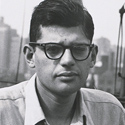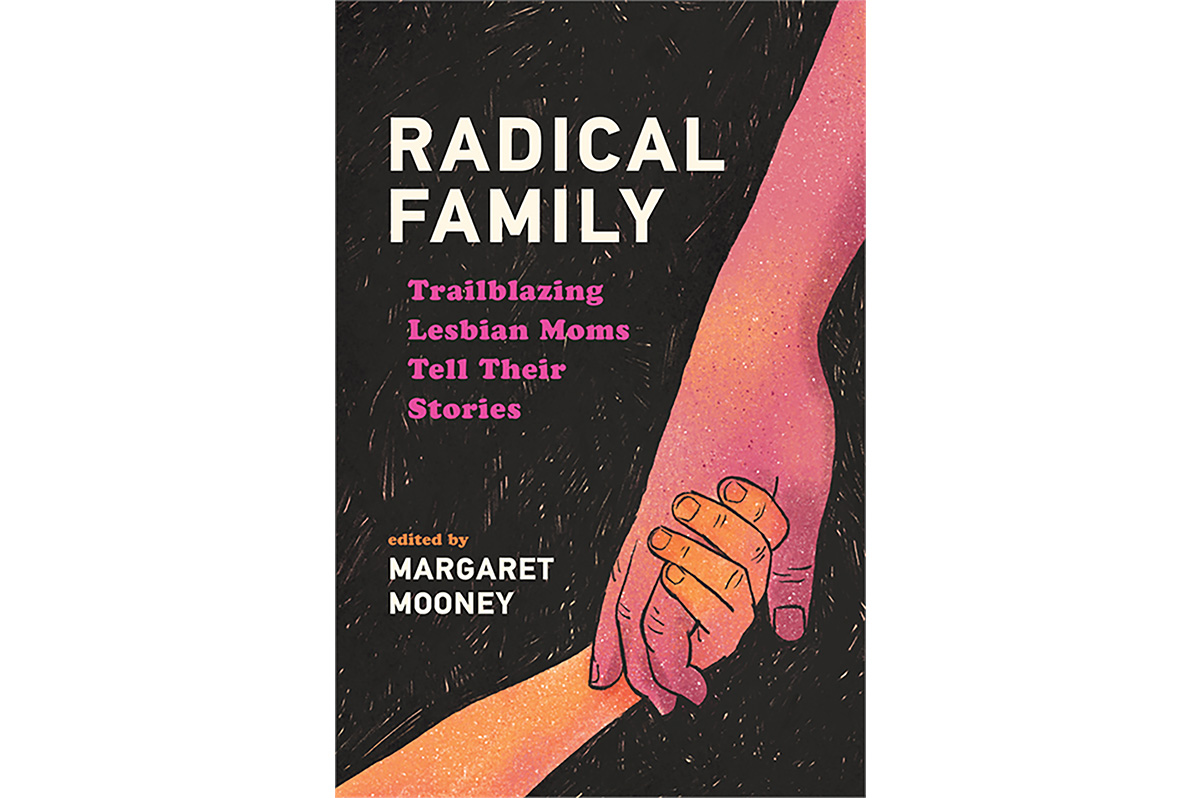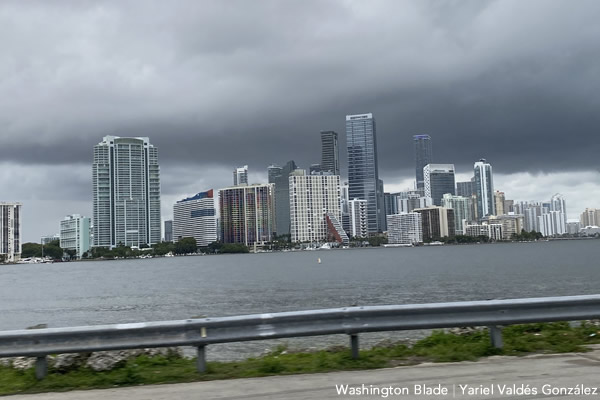Arts & Entertainment
Calendar for July 23
Friday, July 23, to Thursday, July 29

Friday, July 23
Hirshhorn After Hours is tonight at the Hirshhorn Museum and Sculpture Garden, Independence Ave. at Seventh Street, S.W., from 8 p.m. to midnight. Come out for an outrageous night of campy drag and electrifying dance music hosted by drag performer Summer Camp. There will be live performances by Karl Marks, Brandon Joseph Neukam, and Sunrize Highway. DJs Matt Bailer (MIXTAPE, Peach Pit) and Bil Todd (RAW) will be spinning an eclectic mix of electro, alt-pop, disco, and house, with visual projections by Richard Sawka and Erik Loften. Catch the World Premiere of the latest, outrageous digital short from CRACK, featuring Summer Camp, Chris Farris, and Karl Jones and directed by Greg Price with original music by Bluebrain. Tickets are $18 and must be purchased in advance by going to hirshhorn.si.edu/afterhours.
In celebration of the landmark exhibition “Beat Memories: The Photographs of Allen Ginsberg” on view at the National Gallery of Art through Sept. 16, Busboys and Poets, 5th & K Sts., and Split This Rock present “Howl” in the City at 8 and 10 p.m. Renowned poet Anne Waldman, friend of Allen Ginsberg, will present three performances of his legendary poem Howl. Inspired by the spontaneous nature of the Beats, Matthew Hemerlein leads a string quartet in a musical improvisation to accompany the poem. Waldman will also perform her original poems and will be preceded by local poets Chris August, Kenneth Carroll, and Venus Thrash. Tickets are $10 and can be purchased at brownpapertickets.com. Visit washingtonblade.com for more on this event.
The Faux-Real Theatre Company presents Queer in the USA tonight at the Goethe Institut, 812 7th St., N.w., at 11 p.m. as part of the Capital Fringe Festival. A teenage boy’s obsession with Bruce Springsteen leads him to New York City. Lovers, rockers, and gypsies challenge him to embrace his queerness. Does he have what it takes to rock it out like The Boss? Tickets are $15 and can be purchased at Fort Fringe, 607 New York Ave. N.W., or by phone at 866-811-4111.
Wet Girls tonight at Club Liv, 2001 11th St., N.W., from 10 p.m. to 3 a.m. Get drenched with everything from pop to not, featuring DJs K La Rock (You Ain’t Slick) and Junebullet (She.Rex/You Ain’t Slick). $5 cover and must be 18 or older to enter.
Celebrate Shabbat services, 8:30-10 p.m. at the Washington, D.C. Jewish Community Center, 1529 16th St. Services are followed by an Oneg social.
Baltimore Beltway Divas Show at Ziegfeld’s, 1824 Half St., S.W., with Tatiyanna Voché, ChiChi Rae Colby, Phoenix Bloomingdale, JoAnna Blue, Sparkle Alexandria, and the comedy of Shawna Alexander with non-stop club dancing. $5 cover from 9 to 10:30 p.m. and $10 after 10:30 p.m. and always includes $1 off your first drink.
The first ever Mss Apex and Miss Apex Newcomer hosted by Kristina Kelly and Tony “I Thank You” Nelson is tonight at Apex at 10 p.m. Special guest entertainers include Destiny B. Childs, Serria Spaulding, Big Daddy, Isis Deverreoux, and Arione Decardea. There is a $10 cover and you must be 18 to enter, 21 to drink.
Saturday, July 24
Adams Morgan Gives Back is an all day event. Buy a Citizen Effect wristband for $10 at citizeneffect.org to receive free and discounted drinks, food, and more in the Adams Morgan neighborhood at participating businesses. All money raised will be matched by the Charlize Theron Africa Outreach Project and goes directly to building a foster home for abandoned youth in Cloetesville, South Africa.
The DC Women’s Dinner will be at Cafe Luna, 1633 P St., N.W., at 7 p.m. RSVP by sending an e-mail to [email protected]
DC Front Runners fun walk/run at Rock Creek Park is today from 9:30 to 11:30 a.m. The walk goes from 9:30 to 10:30 a.m. and the run goes from 10:30 to 11:30 a.m.
Sunday, July 25
2nd Annual Bet Mishpachah Kugel Bakeoff at 5 p.m. at DC JCC, 1529 16th St. N.W. Bake and bring your favorite Kugel. Participants will vote on the best, and that recipe will be used to make the Kugels served at the Break the Fast.
Monday, July 26
The Capital Area Rainbowlers Association presents the LGBT Summer Bowling Social at AMF Annandale Lanes, 4245 Markham St., Annandale, Va., from 8 to 10 p.m. Bowling is just $1.99 per person per game plus the $4.46 shoe rental fee. There will be some free pizza and fun door prizes/raffles. You do not need to field a team. Just attend and bowl anywhere. RSVP to Les at [email protected]
SAGE Metro DC Monthly Meeting at the DC Center, 1318 U St., N.W., from 6:30-8 p.m. SAGE Metro DC provides support and advocacy for the aging LGBT population.
Tuesday, July 27
Adventuring presents Arlington Evening Bike Ride at 6:30 p.m. This ride continues the summer-long series of Arlington Evening Bike Rides. New riders and those who may be a little out of practice are welcome. The ride will go through Alexandria’s Del Ray neighborhood on a 17-mile loop using bike trails and quiet residential streets. Arrive by 6:25 p.m. at the Clarendon Metro station elevator entrance, Wilson Boulevard and Highland St., and the ride starts promptly at 6:30 p.m. Bring helmet, water and $2 for Adventuring.
Wednesday, July 28
DC Center Summer LGBT Intern Mixer at the DC Center, 1318 U St., N.W., from 7-9 p.m. Are you an intern in D.C. this summer? Know any interns that are LGBT or allies of the LGBT community? Please help spread the word about the first LGBT Intern Summer Mixer at the DC Center.
Mautner Project presents Mind-Body Wellness for Women who Partner with Women: Current Issues with Leslie Calman, Elizabeth Ide, and D Magrini at Equality Maryland, 1201 Sharp St., Baltimore, at 6:30 p.m. This is part of the Speakers Series.
Thursday, July 29
Atlas Performing Arts Center presents Summer Film Series: Gay 101 showing “Where the Boys Are” starring Dolores Hart and George Hamilton at the Paul Sprenger Theatre, 1333 H St., N.E., at 8 p.m. Buy tickets at atlasarts.org or at the box office one hour prior to the movie.
Books
A history of lesbian workarounds to build family
Fighting for the right to have and raise kids

‘Radical Family: Trailblazing Lesbian Moms Tell Their Stories’
Edited by Margaret Mooney
c.2025, Wisconsin Historical Society Press
$20/150 pages
You don’t have a white picket fence with an adorable gate.
The other parts of the American Dream – the house in the suburbs, a minivan, and a big backyard – may also be beyond your reach. You’ve never wanted the joyous husband-wife union, but the two-point-five kids? Yeah, maybe that’s possible. As in the new book “Radical Family,” edited by Margaret Mooney, it’s surely more so than it was in the past.

Once upon a time, if a lesbian wanted to raise a family, she had two basic options: pregnancy or adoption. That is, says Mooney, if she was willing to buck a hetero-centric society that said the former was “selfish, unnatural and radical” and the latter was often just simply not possible or even legal.
Undaunted, and very much wanting kids, many lesbians ignored the rules. They built “chains” of women who handed off sperm from donor to doctor to potential mother. They demanded that fertility clinics allow single women as customers. They wrote pamphlets and publications aimed to help others become pregnant by themselves or with partners. They carefully sought lesbian-friendly obstetricians and nurses.
Over time, lesbians who wanted kids were “emboldened by the feminist movement and the gay and lesbian rights movement” and did what they had to do, omitted facts when needed, traveled abroad when they could, and found workarounds to build a family.
This book tells nine stories of everyday lesbians who succeeded.
Denise Matyka and Margaret McMurray went to Russia to adopt. Martha Dixon Popp and Alix Olson raised their family, in part and for awhile in conjunction with Popp’s husband. Gail Hirn learned from an agriculture publication how to inseminate herself. MC Reisdorf literally stood on her head to get pregnant. Mooney says that, like most lesbian parents then, she became a mother “without any safety nets…”
Such “struggles likely will feel familiar as you read about [the] desire to become parents…” says Mooney. “In short, these families are ordinary and extraordinary all at once.”
In her introduction, editor Margaret Mooney points out that the stories in this book generally take place in the latter part of the last century, but that their relevance is in the struggles that could happen tomorrow. There’s urgency in those words, absolutely, and they’re tinged with fear, but don’t let them keep you from “Radical Family.”
What you’ll see inside these nine tales is mostly happy, mostly triumphant – and mostly Wisconsin-centric, though the variety in dream-fulfillment is wide enough that the book is appropriate anywhere. The determination leaps out of the pages here, and the storytellers don’t hide their struggles, not with former partners, bureaucracy, or with roadblocks. Reading this book is like attending a conference and hearing attendees tell their tales. Bonus: photos and advice for any lesbian thinking of parenthood, single or partnered.
If you’re in search of positive stories from lesbian mothers and the wall-busting they did, or if you’ve lived the same tales, this slim book is a joy to read. For you, “Radical Family” may open some gates.
The Blade may receive commissions from qualifying purchases made via this post.
Theater
Astounding ‘LIZZIE’ builds on legendary axe murder tale
Rock musical twist addresses abuse, oppression, queer identity

‘LIZZIE’
Through Nov. 30
Keegan Theatre
1742 Church St., N.W.
$54-$65
Keegantheatre.com
Lizzie Borden put Fall River, Mass., on the map. When the 32-year-old, seemingly respectable woman was charged with the axe murder of her father Andrew and stepmother Abby in the summer of 1892, it sent shock waves across the community and far beyond.
In time, the gruesome tale would weave its way into the annals of American crime lore, always remembered through that popular nursery rhyme “Lizzie Borden took an axe, gave her father 40 whacks…” Well, you know the rest.
The astoundingly terrific “LIZZIE” (now playing at Keegan Theatre, a short walk from Dupont Circle Metro) builds on the legend. The rock musical with book by Tim Maner, music by Steven Cheslik-deMeyer and Alan Stevens Hewitt, and lyrics by Cheslik-deMeyer and Maner, follows the days leading up to the grisly murders (unseen offstage) through Lizzie’s acquittal, bringing to the fore matters of abuse, oppression, and queer identity.
Shrewdly staged and choreographed by Jennifer J. Hopkins, the show begins with a haunting version of “Forty Whacks (Prologue),” featuring the talented cast of four women who can sing, act, move, and deliver the occasional laugh-out-loud line.
Clearly, frustrated Lizzie (powerfully played by Caroline Graham) and dominant older sister Emma (Sydne Lyon), both unmarried and still at home, are angsty and deeply unhappy. They resent their father for a litany of reasons including his extreme Yankee frugality. While one of the richest men in Fall River, he chooses to live on a sad street and go without indoor plumbing rather than set up housekeeping in posh digs across town. But it’s when they see Andrew’s great fortune slipping away to their stepmother that their fury reaches new heights.
Much of “LIZZIE” takes place at the scene of the crime, the Borden residence – cleverly suggested by scenic designer Josh Sticklin with some clapboard siding, stairways, a bit of period wallpaper and a purposely incongruous, large Borden family coat of arms.
Lighting designer Sage Green, convincingly and evocatively, summons at turns a bona fide rock concert experience, dimly lit parlor, or an intimate setting in a small yard.
And costume designer Logan Benson savvily adds to the atmosphere. Lizzie’s somber dresses with their accurate to the era leg-of-mutton sleeves give way to something altogether glitzier and more revealing after the murders.
There is dialogue, but the Riot Grrrl-inspired work is mostly sung through with punk rock anthems, ballads, and character driven songs. Whether spoken or sung, “LIZZIE” makes no bones about the title character’s guilt while introducing varying levels of collusion among the other women.
A knowing wry smirk from the house maid Bridget (Brigid Wallace Harper) says a lot about the family dynamic (“there’s a lock on every door / In every room a prisoner of a long, silent war”) as well as what went down that summer morning at the Borden house.
Lizzie’s secret girlfriend Alice (golden throated Savannah Blackwell) who conveniently lives next door, is besotted and watches her every move. Just after the murders, she saw Lizzie burn a dress in the yard.
The hard driving score is played by a passionate half-dozen strong band led by Marika Countouris. Sometimes, the instruments overpower the amplified singers and a lyric or two is lost, but that’s not so unusual with rock musicals.
At 90 minutes with a leisurely intermission (well-earned by the band and cast, especially Graham as Lizzie who’s onstage throughout, often incorporating frenetic movement and strenuous air guitar into her many songs), the first half explores feelings of entrapment and the second liberation.
Lizzie goes to trial. Despite a shaky alibi, the defendant seems to be winning over the jury. Looks like she might get that grand house on the hill after all.
The Borden story has been shared in varied ways including innumerable books and documentaries, Jack Beeson’s opera “Lizzie Borden” (1965), Agnes de Mille’s ballet “Fall River Legend” (1954), and the memorable 1975 TV movie starring Elizabeth Montgomery (best known as the perky reluctant witch Samantha Stevens on TV’s sitcom “Bewitched”) playing against type.
Today, the legend endures with “LIZZIE” at Keegan.
Movies
Superb direction, performances create a ‘Day’ to remember
A rich cinematic tapestry with deep observations about art, life, friendship

According to writer/director Ira Sachs, “Peter Hujar’s Day” is “a film about what it is to be an artist among artists in a city where no one was making any money.” At least, that’s what Sachs – an Indie filmmaker who has been exploring his identities as both a gay and Jewish man onscreen since his 1997 debut effort, “The Delta” – told IndieWire, with tongue no doubt firmly planted in cheek, in an interview last year.
Certainly, money is a concern in his latest effort – which re-enacts a 1974 interview between photographer Peter Hujar (Ben Whishaw) and writer Linda Rosenkrantz (Rebecca Hall), as part of an intended book documenting artists over a single 24-hour period in their lives – and is much on the mind of its titular character as he dutifully (and with meticulous detail) recounts the events of his previous day during the course of the movie. To say it is the whole point, though, is clearly an overstatement. Indeed, hearing discussions today of prices from 1974 – when the notion of paying more than $7 for Chinese takeout in New York City seemed outrageous – might almost be described as little more than comic relief.
Adapted from a real-life interview with Hujar, which Rosenkrantz published as a stand-alone piece in 2021 (her intended book had been abandoned) after a transcript was discovered in the late photographer’s archives, “Peter Hujar’s Day” inevitably delivers insights on its subject – a deeply influential figure in New York culture of the seventies and eighties, who would go on to document the scourge of AIDS until he died from it himself, in 1987. There’s no plot, really, except for the recalled narrative itself, which involves an early meeting with a French journalist (who is picking up Hujar’s images of model Lauren Hutton), an afternoon photo shoot with iconic queer “Beat Generation” poet/activist Allen Ginsburg, and an evening of mundane social interaction over the aforementioned Chinese food. Yet it’s through this formalized structure – the agreed-upon relation of a sequence of events, with the thoughts, observations, and reflections that come with them – that the true substance shines through.
In relaying his narrative, Hujar exhibits the kind of uncompromising – and slavishly precise – devotion to detail that also informed his work as a photographer; a mundane chronology of events reveals a universe of thought, perception, and philosophy of which most of us might be unaware while they were happening. Yet he and Rosenkrantz (at least in Sachs’ reconstruction of their conversation) are both artists who are keenly aware of such things; after all, it’s this glimpse of an “inner life,” of which we are rarely cognizant in the moment, that was/is their stock-in-trade. It’s the stuff we don’t think of while we’re living our lives: the associations, the judgments, the selective importance with which we assign each aspect of our experiences, that later become a window into our souls – if we take the opportunity to look through it. And while the revelations that come may occasionally paint them in a less-than-idealized light (especially Hujar, whose preoccupations with status, reputation, appearances, and yes, money, often emerge as he discusses the encounter with Ginsberg and his other interactions), they never feel like definitive interpretations of character; rather, they’re just fleeting moments among all the others, temporary reflections in the ever-ongoing evolution of a lifetime.
Needless to say, perhaps, “Peter Hujar’s Day” is not the kind of movie that will be a crowd-pleaser for everyone. Like Louis Malle’s equally acclaimed-and-notorious “My Dinner With Andre” from 1981, it’s essentially an action-free narrative comprised entirely of a conversation between two people; nothing really happens, per se, except for what we hear described in Hujar’s description of his day, and even that is more or less devoid of any real dramatic weight. But for those with the taste for such an intellectual exercise, it’s a rich and complex cinematic tapestry that rewards our patience with a trove of deep observations about art, life, and friendship – indeed, while its focus is ostensibly on Hujar’s “day,” the deep and intimate love between he and Rosenkrantz underscores everything that we see, arguably landing with a much deeper resonance than anything that is ever spoken out loud during the course of the film – and never permits our attention to flag for even a moment.
Shooting his movie in a deliberately self-referential style, Sachs weaves the cinematic process of recreating the interview into the recreation itself, bridging mediums and blurring lines of reality to create a filmed meditation that mirrors the inherent artifice of Rosenkrantz’s original concept, yet honors the material’s nearly slavish devotion to the mundane minutiae that makes up daily life, even for artists. This is especially true for both Hujar and Rosenkrantz, whose work hinges so directly to the experience of the moment – in photography, the entire end product is tied to the immediacy of a single, captured fragment of existence, and it is no less so for a writer attempting to create a portrait (of sorts) composed entirely of fleeting words and memories. Such intangibles can often feel remote or even superficial without further reflection, and the fact that Sachs is able to reveal a deeper world beyond that surface speaks volumes to his own abilities as an artist, which he deploys with a sure hand to turn a potentially stagnant 75 minutes of film into something hypnotic.
Of course, he could not accomplish that feat without his actors. Whishaw, who has proven his gifts and versatility in an array of film work including not only “art films” like this one but roles from the voice of Paddington Bear to “Q” in the Daniel Craig-led “James Bond” films, delivers a stunning performance, carrying at least 75% of the film’s dialogue with the same kind of casual, in-the-moment authenticity as one might expect at a dinner party with friends; and though Hall has less speaking to do, she makes up for it in sheer presence, lending a palpable sense of respect, love, and adoration to Rosenkrantz’s relationship with Hujar.
In fact, by the time the final credits role, it’s that relationship that arguably leaves the deepest impression on us; though these two people converse about the “hoi polloi” of New York, dropping legendary names and reminding us with every word of their importance in the interwoven cultural landscape – evoked with the casual air of everyday routine before it becomes cemented as history – of their era, it’s the tangible, intimate friendship they share that sticks with us, and ultimately feels more important than any of the rest of it. For all its trappings of artistic style, form, and retrospective cultural commentary, it’s this simple, deeply human element that seems to matter the most – and that’s why it all works, in the end. None of its insights or observations would land without that simple-but-crucial link to humanity.
Fortunately, its director and stars understand this perfectly, and that’s why “Peter Hujar’s Day” has an appeal that transcends its rarified portrait of time, place, and personality. It recognizes that it’s what can be read between the lines of our lives that matters, and that’s an insight that’s often lost in the whirlwind of our quotidian existence.














